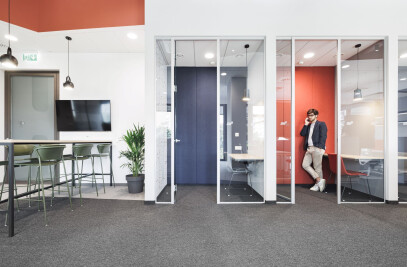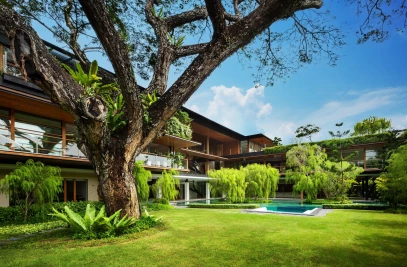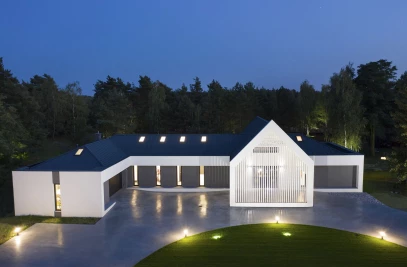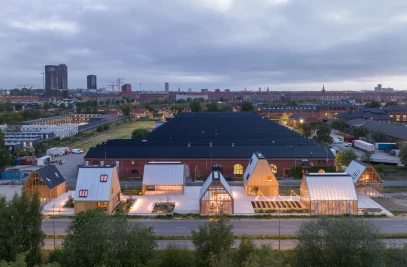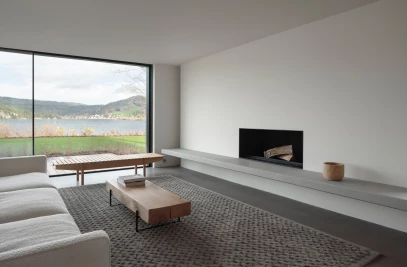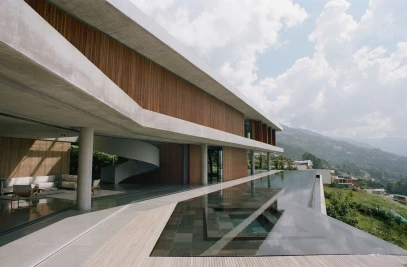Ma Yansong's MAD Architects have completed their first social housing project - Baiziwan Social Housing. Located in downtown Beijing, the sprawling enterprise accommodates 4000 households over 12 Y-shaped residential towers, with a total construction area of 473,300 sq. m on a 93,900 sq. m site.
Yansong is a passionate advocate for social housing and teaches on the subject at both Tsinghua University and the Beijing Architecture University. He was invited to spearhead the project by Beijing's Public Housing Centre in 2014, based on extensive research he had conducted on the design and historical development of social housing in a range of different countries.

MAD Architects have a mission of developing futuristic, organic, technologically advanced designs. They envision the city of the future as one based on the spiritual and emotional needs of residents and their projects seek to create a balance between humanity, the city, and the environment. The Baiziwan project offered them an opportunity to serve low-income communities and offer a fresh, contemporary perspective on often pedestrian Chinese residential architecture.
The concept for the project was to create an open neighbourhood connected with the city; to integrate community within the urban fabric. The plot is divided into six blocks with a central common avenue acting as a core artery. This approach brings a human scale to the large site by fragmenting it into distinct areas while focusing on the connections between them. At street level, the avenue functions as a retail and dining precinct, housing a diverse array of vibrant commercial and convenience spaces including cafes, restaurants, bookstores, pharmacies, elder care and kindergarten facilities, and cultural and sporting facilities. Having a diversity of services and spaces creates a sense of community within the new neighbourhood.

The second level, accessible to all residents, is conceived as an above-ground park or 'floating garden'. It comprises a vibrant terracotta-hued pedestrian circuit weaving through all six of the residential blocks and incorporating abundant greenery, as well as hosting a broad range of community spaces including a gym, badminton court, walking tracks, gardens, children's playground, and an ecological sanctuary.
Nature is integrated at a range of scales throughout the project, with a green coverage of 47%, an exceptional figure for high-density, city-centre living (the figure for similar projects averages at around 30%). Staggered half-floors and semi-open grey spaces are juxtaposed with rooftop gardens, extensive landscaping at street level, and the floating garden. In terms of construction, the use of gradual stepping forms and stratified building heights suggests an undulating mountain topography across the site, while semi-enclosed spaces in the interfaces between buildings provide a sense of intimacy. Together, these eco-inspired interventions create a sense of grounded, holistic living within one structure and organically anchor the development within the surrounding cityscape.

Six general typologies and three ultra-low energy consumption typologies were used for the residential units, spanning areas of 40, 50, and 60 square metres respectively. MAD meticulously refined the design to ensure sufficient sunlight was available to each tenantable room within the high-density plot. Their solution was to create a Y-branch building form with north-facing communal corridors to maximise sunlight exposure.
Sustainability considerations also factored into the construction process, with 80 per cent of building components being prefabricated off-site. Two of the buildings are built to passive housing standards, reducing energy consumption by 90%.
In creating a design model centred on humanity, the Baiziwan Social Housing project sets a new standard of innovation in how cities can become more vibrant and inclusive. The rapid growth of real estate development in China in recent decades has resulted in uninspired and somewhat monotonous residential design. Low-income housing has not been prioritized due to the overwhelming demand of the commercial market.

With immigration increases and wage disparities creating a greater need for affordable and social housing, MAD has offered the Baiziwan project as a design solution that caters to both the functional need for more housing whilst prioritizing communal living. By embedding participatory and collective elements throughout the design, the project integrates affordable housing with a universal ideal for dignified living, and serves as a cutting-edge model that can be replicated for future development projects.

























